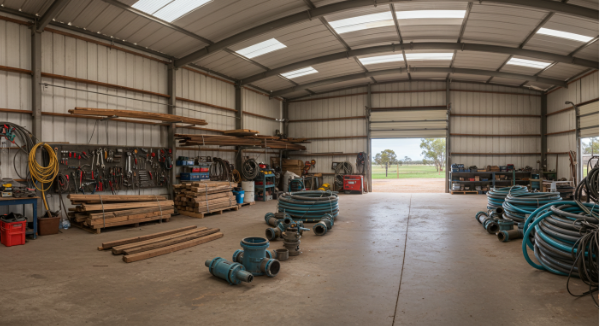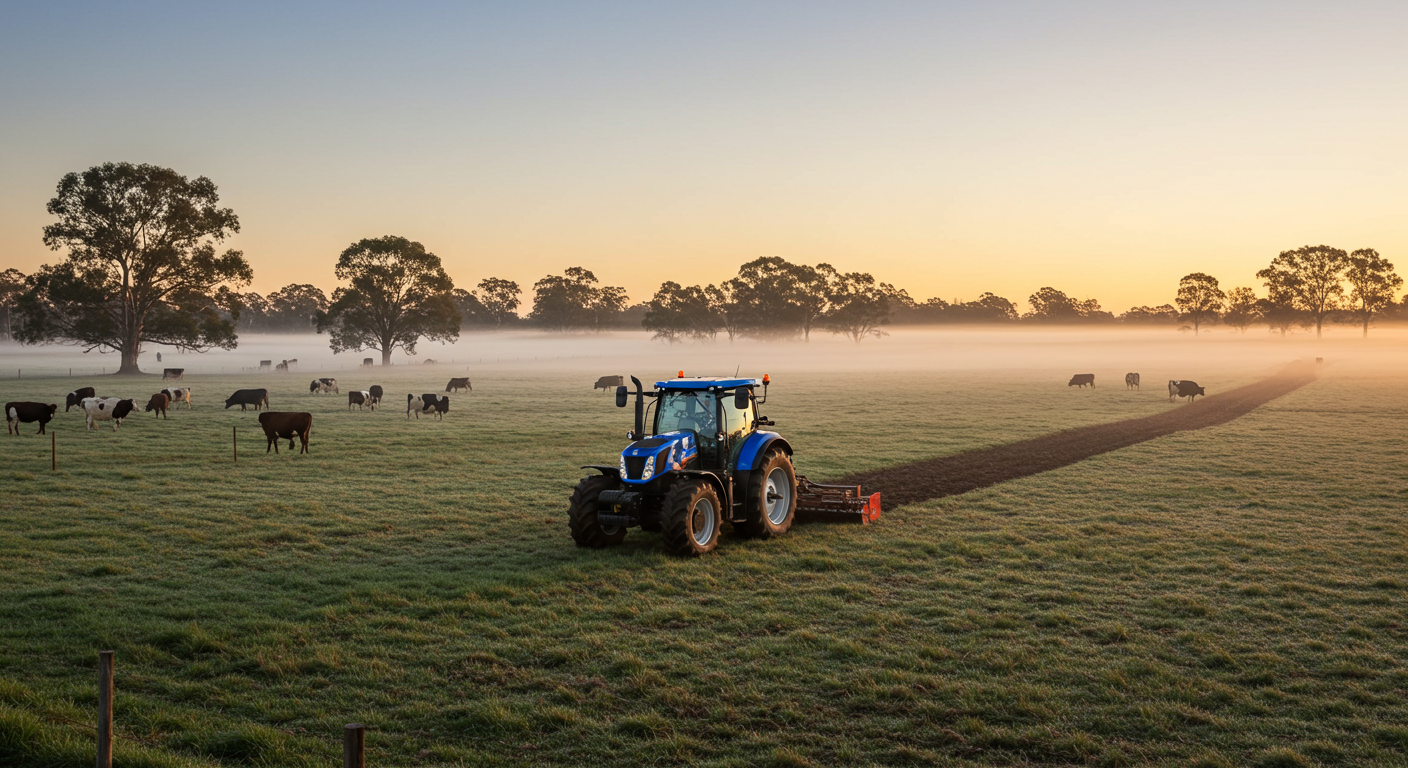Everything You Need to Know About Agricultural Finance
Australian farmers understand that managing cash flow matters for picking the right seeds or fixing tractors. Even the best land won't pay off long-term without innovative financing. This guide breaks down the basics of farm finance, benefits, and available options for today's farmer.
What is Agricultural Finance?

Agricultural finance fulfils the financial requirements of farmers and other types of agribusiness. It applies to rural businesses of all kinds, such as farms, vineyards, fertiliser producers, floral companies, hydroponics, beekeepers, equestrian operations, and any other type of business associated with nature. Agriculture relies on finance because the costs of buying new tools, machinery, and vehicles can be significant. To get the best deal on the market, it is helpful to approach a supplier that focuses on your industry in the agriculture domain. The main finance options available in the agribusiness sector are explained below:
1. Building Conversions
Fit-out loans are available for the remodelling of existing buildings for farm use or to help your business diversify by fitting out an existing building to operate as a farm shop, restaurant, or accommodation. Other types of finance for building conversions include hire purchase, business loans, and finance lease.
2. Plant and Machinery Finance
Plant, machinery, or asset finance can be used for purchasing the essentials in farming, including combine harvesters, crop sprayers, animal feeders, and cattle grids. Plant and agricultural machinery finance allows businesses to spread the payment costs over numerous years with monthly payments. It can be a blessing for farmers as the costs for the equipment are usually high. Asset finance is also available for new and used machinery, providing additional flexibility in terms of cost control.
3. Commercial Vehicle Finance
Commercial vehicle finance is another way to acquire essential cultivation vehicles, such as tractors (and all the attachments that come with them), trailers, specialist vehicles (e.g., for carrying livestock), or any other essential equipment. Like machinery and equipment costs, vehicle expenses can be substantial for farmers opting for commercial vehicle loans, allowing them to spread the costs over time.
4. Livestock finance
Besides vehicles and equipment, get a loan for cattle to improve the herd for meat, milk, or hide farming. Obtaining livestock finance for various animals, including cows, sheep, beef, poultry, and pigs, is also possible. It covers more than just buying farm animals; use it to purchase feed, get medical care, and provide shelter.
5. Equipment Finance
Agricultural equipment financing has a vital impact on the purchase of the latest farming technology. Take a vegetable farm as an example. It might use this kind of loan to buy a polytunnel, automated watering system, greenhouse, and harvester.
6. Business Loans
Business loans support various projects for farmers and agribusinesses, providing funds for infrastructure development, land expansion, agricultural diversification, and polyculture initiatives.
7. Refinance
Refinance the existing agricultural equipment to free up working capital. Farmers can get money by using their current machines, tools, or even property as security. Take a dairy farm as an example. It might get a new loan on its milking gear to buy more cows or make better feeding setups. In the same way, a grain farm could get a fresh agricultural loan for its group of tractors to buy more effective harvesting machines.
8. Sustainable energy
Loans can also be utilised in power generation investments. Try it for purchasing and setting up solar panels in fields or constructing an anaerobic digestion facility.
What are the Basic Elements of Farm Finance?

Starting or growing a farm requires capital and lots of effort. Knowing your capital requirements early on will save you financial stress down the track. The typical capital costs include land purchase, lease, machinery, sheds, fencing, irrigation, and livestock.
Running costs are the day-to-day expenses that keep the farm functional. These include staff, seeds, fertilisers, pesticides, fuel, repairs, upkeep, insurance, licensing fees, and seasonal worker payments.
Income doesn’t have to come from just selling crops or livestock. Many Australian farms are diversifying their income through the sale of crops and livestock, dairy production, wool or egg production, agritourism, workshops, farm-to-table sales, or on-site markets.
Banks and credit unions are the most common sources of farm management loans. Depending on your operation’s size and purpose, you may be eligible for:
- Term loans for big-ticket items
- Equipment finance for agriculture, tractors, and machinery
- Lines of credit for seasonal expenses
The Australian federal government, together with state authorities, offers several financing options for farmers:
- Low-interest funding through the Regional Investment Corporation (RIC)
- Rebates for adopting sustainable farming practices
- Grants for drought resilience or water efficiency
Many of these programs have limited enrollment windows, so it's essential to check eligibility. Not every farmer gets approved by a bank. Continually evaluate the possibilities of agri-investment platforms, crowdfunding, and peer-to-peer lending.
What are the Advantages of Agricultural Finance?
Your farming business can take advantage of securing funds through agricultural finance in several ways. Here are five key benefits:
1. No Significant Upfront Costs
If you cannot receive funding via traditional lenders, your way to access assets is with a significant upfront cash payment. Spread the costs in regular payments with a lease agreement, protecting your cash flow, which is vital for small or new businesses in these uncertain times of the Australian economy.
2. Tax benefits
Another big advantage of agricultural finance is that you may also benefit from tax relief for the agreement duration. Finance rental payments can be 100% tax-deductible against your profits. Depending upon other taxable deduction claims, you can also reduce net outlay.
3. Tailored Repayment Options
The cash flow and income cycle for farming businesses fluctuate seasonally. Therefore, Livestock Capital offers flexible terms within your agreement, including seasonal payments and other tailored repayment plans.
4. Quick Decisions
Applications can take time when funding is sought from traditional lenders. We take the pressure off with a streamlined application process, as we utilise in-house underwriters who handle your finance applications with a rapid turnaround time (on average, just over 4 hours).
5. Cost-Effective Way to Grow Business
Taking advantage of alternative finance solutions allows you the opportunity to grow or diversify agri-business operations. It is the chance to change the farming business without the challenges of insufficient funding.
Conclusion
There are
multiple funding options available to Australian farmers, including crowdfunding, government allocations and support, overdrafts, bank loans, loans based on the growth of animals or crops, and equipment loans. Each way of financing has its benefits and drawbacks. Farmers need to critically assess their choices and select a solution that suits their needs and affordability. Working with
Livestock Capital can help farmers navigate the complexities of agribusiness and farm finance





